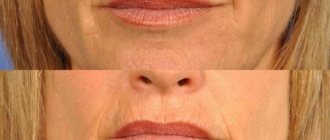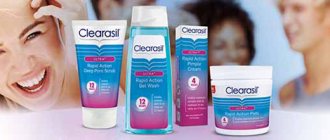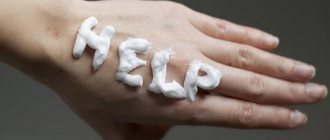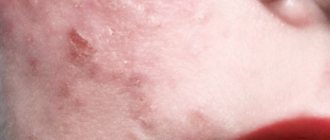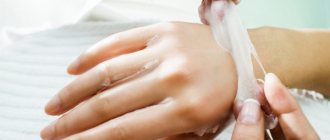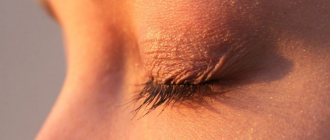Our body is a complex system in which all processes are interconnected and adjusted by nature. The slightest malfunction in its operation affects the functioning of the entire system, including our appearance. Initial data, such as hair color and body type, are recorded in the DNA code and do not change throughout life, and how elastic our skin and slim body looks largely depends on the level of hormones. There are ten main hormones that affect our beauty. We decided to find out what exactly each of them does and how hormonal imbalance affects appearance.
Estrogen
Estrogens are a whole group of female sex hormones, which include estrone, estriol and estradiol. All of them are produced in the ovaries and are responsible for the formation of a female body type, the development of the genital organs and regulate the menstrual cycle. “If estrogen is produced in normal quantities, it has a very positive effect on a woman’s appearance,” says Irina Vyatkina, gynecologist-endocrinologist at the Marina Ryabus Clinic. – This hormone is involved in the process of cell renewal throughout the body, including the skin. Estrogen also has a positive effect on the beauty of hair: it gives it shine, maintains youth and health. Estrogens lift the mood, encourage flirtation and coquetry, prevent the deposition of cholesterol in the walls of blood vessels, make the eyes shine, smooth out wrinkles, make the skin elastic and firm, thereby making a woman beautiful. In addition, estrogens elevate mood and encourage flirting and coquetry - they contribute to the development of attraction in women to males. Against the background of increased estrogen production, coordination of movements and thereby gait improves, and the quality of speech changes. It becomes more pleasant to perceive.”
Estrogen is rightfully considered the main female beauty hormone. Its deficiency affects not only your well-being, but also your appearance: hair becomes dull and can grow in unnecessary places (for example, on the chin or chest), and the skin looks pale and begins to fade early. It is with the level of estrogen that the phenomenon known as “autumn hair loss” is associated. Hormone levels naturally rise in the spring and summer, but decline in the fall. Seasonal hair loss within reasonable limits is a normal state of the body, and there is no reason to worry about it.
There are situations when a woman’s estrogen levels are elevated. This is accompanied by sexual dysfunction (menstruation or ovulation disappears), the formation of fat in the abdomen and thighs, as well as premenstrual syndrome.
Introduction
The increase in life expectancy in modern developed societies is the result of an increased elderly population for the first time in human history. (Wilkinson and Hardman, 2017). Due to the fact that women are living longer, and the age at menopause remains stable beyond about 51 years, the proportion of life in the postmenopausal state is increasing. (Labrie, 2015). Menopause is defined as the cessation of the menstrual cycle for 12 months due to complete cessation of ovarian function, resulting in a sharp decrease in estrogen levels (Greendale et al., 1999) affecting virtually all organ systems. (Duarte et al., 2016, Shu and Maibach, 2011).
Postmenopausal symptoms are quickly reflected in the skin, with manifestations such as loss of structural architecture and susceptibility to damage. (Sator et al., 2004, Wilkinson and Hardman, 2017)
A decrease in estrogen accelerates many skin changes often characterized as exogenous aging, including dryness, atrophy, wrinkles, and decreased wound healing. (Creidi et al., 1994, Irrera et al., 2017)
The purpose of this article is to create a systematic review of the role of estrogen in the dermis and changes associated with estrogen deficiency, along with a review of alternatives to systemic hormone replacement therapy and to characterize the effects of these interventions on estrogen-deficient skin.
Estrogen-deficient skin
Dermal aging is the result of chronobiological, environmental, genetic, and hormonal factors. (Shu and Maibach, 2011)
Low estrogen levels can also be caused by iatrogenic causes, so the term “menopausal” does not cover a wide range of women in a certain age group, but more often characterizes skin manifestations, so for this category of women it would be more appropriate to use the term estrogen deficiency conditions. Estrogen is a steroid that is synthesized from cholesterol in the ovaries in women before menopause, and in peripheral tissues after menopause. (Hall and Phillips, 2005).
There are predominantly two types of estrogen receptors (ERs) in the skin, α and β (Pelletier and Ren, 2004). Histologically, their relative expression levels begin to decline from the onset of the perimenopausal period, along with the onset of the woman's estrogen deficiency state. (Nelson and Bulun, 2001). Both ERs are not sensitive to estradiol, however, information on the expression of ER-α and ER-β indicates their tissue specificity: ER-β is more widely represented in the skin than ER-α. What's interesting is activation
ER-α is a major cause of cancer affecting the reproductive system (Kumar et al., 2016), so targeting ER-β is a potential and target.
Many studies show that women notice the initial signs of skin aging even before entering menopause. (Thornton, 2013). One of the first symptoms is dry skin, accompanied by loss of firmness and elasticity. (Castelo-Branco et al., 1992).
These symptoms correlate with structural and architectural changes in the skin: decreased sebum production, collagen content, elastin fibers and dermal thickness. (Affinito et al., 1999, Raine-Fenning et al., 2003, Sumino et al., 2004, Verdier-Sévrain, 2007).
Estrogen helps maintain and replenish skin hydration by increasing sebum production, mainly by regulating the expression of insulin-like growth factor receptors and increasing the production of insulin-like growth factor from fibroblasts (Ashcroft et al., 1997), which in turn induces lipogenesis in sebocytes and leads to moisture retention. Also, estrogen therapy increases the level of mucopolysaccharides and hyaluronic acid in the dermis, which helps maintain skin hydration (Grosman, 1973, Grosman et al., 1971), and therefore improves the barrier function of the stratum corneum of the skin and improves the corneocyte environment (Duarte et al. ., 2016).
A progressive decrease in dermal thickness in estrogen-deficient skin occurs due to loss of collagen (Brincat et al., 1987, Brincat et al., 1987) and a decreased rate of collagen synthesis (Ashcroft et al., 1997). Collagen levels in skin type I (80%) and type III (15%) as the most common (Shah and Maibach, 2001) correlate with estrogen levels (Affinito et al., 1999), and simultaneous supplementation with hormone replacement therapy (Castelo- Branco et al., 1992) and topical estrogen (Creidi et al., 1994, Varila et al., 1995) in a state of estrogen deficiency shows an increase in collagen synthesis.
Research also suggests that estrogen deficiency accelerates the loss of skin elasticity by triggering microstructural changes in elastin fibers, leading to the formation of wrinkles (Bolognia et al., 1989).
Scores of extracellular matrix deterioration in menopausal women correlate more with estrogen deficiency than with chronological aging (Brincat et al., 1987, Brincat et al., 1987), supporting a role for estrogen in skin changes. Research shows that up to 30% of collagen can be lost in the first 5 years after menopause, and the amount of collagen decreases by approximately 2.1% per year (Archer, 2012). Thus, the thinning of the dermis increases by 1.1% per year.
In addition, experimental studies suggest that the presence of estrogen may protect skin cells from oxidative damage, and a significant decrease in estrogen levels during menopause may make the skin more vulnerable to it. (Bottai et al., 2013).
Although the significance of hormonal aging is still being studied, there is ample evidence to suggest that the decline in estrogen levels during menopause is responsible for characteristic changes in the skin, namely thinning of the epidermis, decreased amount of collagen in the dermis, decreased skin hydration, increased sagging and poor healing. wounds (Hall and Phillips, 2005).
Treatment
Although systemic hormone replacement therapy can reverse the signs of estrogen-deficient skin, various risks (mainly endometrial hyperplasia or cancer (Sator et al., 2004), but it is important to also take into account the increasing risk of breast and ovarian cancer) should be discontinued their use to treat estrogen-deficient skin (Duarte et al., 2016). Since the desire to maintain more youthful-looking skin comes from a large segment of the modern population (Jenkins et al., 2014), studies that evaluate approaches to address age-related skin changes in menopause, alternative medicine and topical therapies will be expanded (Shu and Maibach, 2011).
Methods
Mayut conducted a literature search in the MEDLINE (PubMed) database dating from January 1987 to June 2022, combining keywords related to the following topics: “menopause”, “postmenopause”, “menopause”, “skin”, “topical”, “cutaneous” ”, “estrogen”, “estradiol”, “estrone”, “estriol”, “17-beta estradiol”, “estrogen cream”, “estrogen ointment”, “isoflavones”, “genistein”, and “phytoestrogens.” In addition, a detailed hand search of references from significant articles was completed and supplemented with studies missed by the computer search.
The investigator reviewed studies using study titles and abstracts; articles were selected if the study described clinical trials of menopausal or postmenopausal women who received either topical isoflavone or estrogen treatment. Individual cases, animal studies, and studies where the majority of participants were male were not included in the Tables. Topical products include: gel, ointment, cream, patches, transdermal applications. In addition, although menopause was defined separately in each study, the criterion was consistent and implied a period of 6 to 12 months of amenorrhea. The number of participants ranged from 8 to 234, and the duration of treatment varied from 2 weeks to 58 months. The studies assessed various skin parameters such as skin elasticity, epidermal thickness, hyaluronic acid concentration, collagen content, facial wrinkles, texture status, elasticity, wound healing, sebum production and skin hydration
Topical products with estrogen
Our review includes 23 studies assessing the effect of topical estrogen on menopausal skin. Studies differ in various parameters, such as: study design, method of application of the topical product, estrogen concentration in the product, concomitant use of tonic therapy, and the presence of a control group. For example, some studies are designed prospectively, assessing the effect of topical estrogen on the skin in the same patient, before and immediately after treatment. Other studies were designed using a case-control design, with a group receiving topical estrogens and a control group receiving placebo or nothing at all. There are also studies in which the patient uses topical estrogen agents on one area of the body, and applies a placebo or nothing on the collateral area. There are differences in the form of topical products; studies were conducted using gel, ointment, patches, and cream. The doses of the prescribed drugs are also different. We pay attention to the areas that were most often treated: face (n=12), arms (n=8), abdomen (n=5), buttocks (n=2), and thighs (n=1).
A negative effect was observed quite rarely in all studies, and if present, it was quite weak. For example, a study using transdermal estrogen patches noted transient breast tenderness in three subjects and one case of localized erythema in the area where the hormonal patch was applied (Sator et al., 2001).
Most studies did not report any symptoms associated with estrogen administration, including vaginal bleeding, vasomotor symptoms, or edema (Jemec and Serup, 1989). Several studies have measured serum FSH, prolactin, and estradiol before and after treatment to determine the systemic effect of topical treatment, but the data do not indicate any significant change in these three parameters.
Interestingly, one study noted similar improvements in cheek skin when topical estradiol gel was applied to the forearm, even though the cheek skin was not in close proximity. Thus, a systemic effect of topical agents can be assumed (Masuda et al., 2013). Finally, some studies included oral progesterone in their protocol to prevent endometrial hyperplasia (Bolognia et al., 1989, Brincat et al., 1987, Brincat et al., 1987, Castelo-Branco et al., 1992, Sumino et al., 2009), but in others this purpose is absent (Varila et al., 1995). Detailed details of the studies are outlined in Table 1.
Topical products with isoflavones
Preliminary studies on isoflavones and their effects on the skin have already been performed (Kaari et al., 2006, Kotsopoulos et al., 2000, Polito et al., 2012); However, the effectiveness of isoflavones (especially the effect of topical products on menopausal skin) remains poorly studied. Our literature review examines four studies that evaluate the effect of topical isoflavones on menopausal skin (Table 2). The first study was supervised by the European Research Center and examined the effect of an isoflavone cosmetic cream (Novadiol) on 234 menopausal women (Bayerl and Keil, 2002). During 12 weeks of treatment, subjects applied isoflavone cream (at a concentration of 0.0075% in the morning and 0.015% in the evening) to the skin of the face, neck and shoulder, the other shoulder was not applied for further comparison. After evaluation, skin hydration and texture significantly improved in the application area by 32.9% and 22%, respectively, compared to baseline and non-application area. In addition, wrinkles and sagging were significantly reduced by 22% and 24% compared to baseline. However, it is difficult to determine whether this was due to the isoflavones or the moisturizing base of the product.
The other three studies assessed different parameters of an isoflavone gel (containing 4% genistein) on the skin of menopausal women (Moraes et al., 2009, Patriarca et al., 2013, Silva et al., 2017). Parotid skin biopsies were performed before and after 24 weeks of topical application to determine quantitative outcome. In the first study, Moraes et al. (2009) studied morphological parameters of the skin and noted a 20% increase in epidermal thickness and a 77% increase in the number of dermal capillaries (p<0.5). In contrast, the increase in dermal papillae and fibroblasts was not significant (Moreas et al., 2009). Later, Patriarca et al. (2013) assessed the extracellular matrix of the dermis before and after treatment, which reflected a significant increase in the concentration of hyaluronic acid compared to the initial level (p<0.5). In the latter, Silva et al. (2017) calculated and assessed collagen concentrations before and after treatment and found a significant increase in collagen types I and III after the end of the study (24 weeks; p < .001).
In these studies, no significant systemic effect was observed after topical use of the gel, where markers were: vaginal cytology, transvaginal ultrasonography and/or serum estradiol (Moraes et al., 2009, Patriarca et al., 2013, Silva et al., 2017) . These three studies also used estradiol gel application in a control group, which showed that compared with topical isoflavones, estrogen resulted in superior skin health after treatment (p < .01; Moraes et al., 2009, Patriarca et al., 2009). al., 2013, Silva et al., 2017).
Discussion
The postmenopausal period is characterized by a physiological cessation of ovarian estrogen production (Greendale et al., 1999), which causes significant changes in the EDC (Thornton, 2013). The key role of estrogen is to maintain the structural and functional integrity of the skin, which is reflected in studies that show that estrogen is indispensable for skin hydration, sebum production and improves barrier function in the stratum corneum of the skin, increases the content of collagen and elastin (Duarte et al., 2016, Verdier -Sevrain, 2007).
Many studies also reflect the effects of estrogen replacement therapy in EDC, evaluating the results of administering both systemic and transdermal estrogens (Masuda et al., 2013). Despite the positive effect on the skin from estrogen supplementation, the use of exogenous estrogens carries a risk of breast, ovarian and endometrial cancer. Thus, the number of studies evaluating the effectiveness of topical estrogen and estrogen receptor agonists has increased. Despite the lack of systemic effect after the use of topical estrogen described in many studies (Moraes et al., 2009, Silva et al., 2017), some of them show exactly the opposite results.
For example, Masuda et al. (2013) described cases of erythema in menopausal women after applying a gel containing 0.06% estradiol, taking into account that topical application can cause a systemic effect through entry into the blood, in addition to local manifestations on the side of application (Masuda et al. , 2013). However, a Cochrane meta-analysis of 19 studies involving 4162 women reflects that topical transvaginal estrogen therapy is not associated with an increased risk of endometrial hyperplasia compared with placebo; however, supplemental progesterone is not required to protect the uterus if estrogen is applied directly to the vaginal and vulvar areas (Suckling et al., 2006). In general, systemic absorption of topical estrogen is low and does not increase the risk of venous thromboembolism compared with systemic estrogen therapy (Ballagh, 2005). In connection with this, it is not entirely clear whether topical use of estrogen can produce undesirable systemic effects, so treatment of EDC with estrogen is not yet widespread.
More recently, the beneficial effects of estrogen from plant hormones (so-called isoflavones) have been discovered. Soy isoflavones are a naturally occurring isoflavonoid exclusively produced by members of the Fabeca family and include soybeans, lentils, and red clover (Irrera et al., 2017). The most studied isoflavone is genistein. Isoflavones are structurally similar to 17-B estradiol, they can interact with the estrogen receptor and are therefore classified as mammalian phytoestrogens or dietary estrogens. Polito et al. (2012) suggested that isoflavones may have similar effects to estrogen replacement therapy and would have a positive effect on menopausal skin changes.
Studies also show that when applied tropically, certain phytoestrogens behave like estrogens, causing proliferation of the epidermis, supporting collagen synthesis, and reducing its enzymatic degradation (Sator et al., 2004).
Isoflavones (genistein) have a high affinity for ER-β, which is more often found in the skin, bone tissue, and cardiovascular system (Cassidy et al., 2006), and a low affinity for ER-α, which is found in the uterus and breast (Duarte et al., 2016). Because of their ability to be tissue specific, isoflavones are considered selective estrogen receptor modulators, to which tamoxifen and raloxifene also belong (Messina, 2014). Despite this, more well-controlled studies are required. In the meantime, isoflavones are potential candidates for the treatment of EDC, the use of which can avoid the negative effects of systemic estrogen use. Topical estrogens have low systemic absorption and associated risks, but genistein carries an even lower risk due to its receptor selectivity.
Although studies show beneficial effects in both the use of topical estrogen and the use of isoflavonoids, the latter show less effect compared to synthetic estrogen (Markiewicz et al., 1993). The result of most studies showed that topical genistein was inferior to epic estrogen, and these differences were significant (p < .01; Moraes et al., 2009, Patriarca et al., 2013). One of the studies also assessed patient satisfaction after treatment (blinded) and found that 88% of patients in the estrogen group rated their skin improvement, which was significantly higher than 50% of patients in the isoflavone group (p = .01; Moraes et al ., 2009).
Conclusion
The effects that estrogen deficiency has on the skin are an important endogenous cause of aging in women.
Treatment strategies that address hormonal deficiencies are limited. Clinically significant is the fact that commercial products containing estrogen can be used to improve skin texture, hydration and elasticity, and reduce the number of wrinkles in the EDC. Nevertheless, it is worth paying attention not only to the positive aspects but also to the safety of using topical estradiol; studies on the effectiveness of isoflavones, in turn, are also scarce. Therefore, more research is needed on tropical agents to prevent and treat EDC.
Conflict of interest:
Bette McLellian, Rupal Jouran, and Jenny Muraz are consultants for Ferndale Pharmaceutical.
Table 1. Studies evaluating the effect of topical estrogen on the skin of menopausal women
| Study group | Treatment group (n) | N | Duration of treatment | Application area | Results of interest |
| Brincat et al., 1987 , Brincat et al., 1987 | 1.5 mg estradiol gel | 16 | 12 months | Underbelly | - The amount of collagen in the abdominal area (the site of application of the gel) is statistically higher compared to the baseline level - The amount of collagen on the skin of the thigh (distant from the site of application) increased by a slight level |
| Punnonen et al., 1987 | 1 mg estrogen ointment | 14 | 3 weeks | Underbelly | - The number of elastin fibers in the papillary dermis increased, better located and slightly increased in 50% of patients compared to 0% in the control group - Epidermal thickness increased slightly by 29% in the study group and by 17% in the control group - No significant changes in size epidermal cells, mitotic activity of the epidermis, dermal vascularization, or inflammatory infiltration in samples taken before or after treatment |
| Bolognia et al., 1989 | Transdermal patch with 17beta-estradiol ( Estraderm ) | 18 | 6 months | n/a | -Cases of skin hyperemia were found only in the treatment group; no cases were recorded in the placebo group -There was no significant difference between the treated group and the placebo group for the following skin manifestations: dryness, flaking, excoriation, hematoma, flaking of the scalp, number of pigment spots, number of horny scales. |
| Jemec and Serup, 1989 | 17beta-estradiol gel (concentration 0.1 mg/g and 1.0 mg/g) | 8 | 180 days | Inner forearm | There were no statistically significant differences observed in skin conductance, elasticity, distensibility, or hysteresis when comparing areas treated with topical estrogen and placebo. |
| Castelo-Branco et al., 1992 | 50 mcg/day transdermal 17beta-estradiol | 28 | 12 months | Application area: not defined Biopsy area: lower abdomen | The collagen concentration in the skin increased slightly compared to the baseline level (+ 5.1%; p < .01) |
| Schmidt et al., 1994 | 0.3% estriol cream or 0.01% estradiol cream | 18 | 6 months | Face | - Symptoms of skin aging (vascularization, loss of firmness, elasticity, hydration, wrinkle depth, pore size) improved in both groups, but the effect of topical estriol was marginally superior to that of estradiol as the effect progressed. |
| Creidi et al., 1994 | 1 g Premarin cream (0.625 mg conjugated estrogen/g cream) | 27 | 24 weeks | Face | - Skin thickness increased slightly in the treatment group, compared to the placebo group (p = .013) - Wrinkle status increased slightly in the treatment group compared to the placebo group ( |
| Varila et al., 1995 | 2.5 mg gel with estradiol (Estrogel, same as 1.5 mg 17beta-estradiol) | 12 | 3 months | Underbelly | - The amount of collagen in the skin, based on the amount of hydroxyproline, increased slightly in the estradiol-treated group (p = .012) - Levels of carboxy-terminal human propeptide of type I collagen increased slightly after treatment. — The level of amino-terminal human propeptide of type III collagen increased statistically slightly. |
| Pierard-Franchimont et al., 1995 | Cyclic transdermal hormone replacement therapy using estradiol at a dosage of transdermal 3.2 mg (Systen TTS, Cilag) | 15 | 1 year | Lateral forearm | — Water retention by the stratum corneum of the epidermis increased slightly in the treatment group, measured using a plastic occlusion stress test |
| Callens, 1996 | 17beta-estradiol gel (Estrogel) estradiol transdermal system (Estraderm TTS) | 49 | 58 months (range: 2-170 months) | Thigh, buttocks, abdomen, forearms, inner upper arm, outer forearm, or neck | - Skin thickness (measured by sonography) and Sebum amount (measured by Sebumeter) increased slightly in the treatment group compared to the untreated group - Hydration (measured by electrical conductivity) and photomicrography (measured by visual analysis) did not reflected any changes in the comparison of the two groups |
| Schmidt et al., 1996 | 0.01% estradiol, 0.3% estriol cream | 59 | 6 months | Face and neck | - skin elasticity and firmness improved noticeably, wrinkle depth and pore size decreased in both treatment groups - type III collagen increased significantly in both treatment groups |
| Ashcroft et al., 1999 | Evorel patches for hormone replacement therapy, 25 g estradiol/24 hours | 9 | 80 days | Upper surface of the shoulder | Accelerated wound healing, decreased wound size, increased collagen levels, increased collagen levels, increased fibronectin in the wound area in the treated group |
| Sator et al., 2001 | Transdermal estrogen (Estraderm TTS) | 13 | 6 months | Temporal bone, inner upper arm, suprasternal region | - surface skin lipids increased significantly with the administration of oral forms of progesterone; with estrogen monotherapy, the amount of lipids was significantly reduced - epidermal hydration, skin elasticity and firmness improved significantly in the treatment group compared to the control group. |
| Fuchs et al., 2003 | 0.01% estradiol cream | 44 | 6 months | Face (temple hairline) | — the thickness of the epidermis increased by 23% compared to the control group — Markers of skin aging (rete peg pattern, thinning of the epidermis) were significantly improved/reversed |
| Son et al., 2005 | 0.01% 17B-estradiol | 13 | 2 weeks | Buttocks | - expression of type 1 procollagen, tropoelastin, fibrillin-1 mRNAs increased - MMP-1 protein level decreased — Keratinocyte proliferation and epidermal thickness increased |
| Patriarca et al., 2007 | 0.01% micronized 17B-estradiol gel | 15 | 16 weeks | Face | -The thickness of the epidermis and dermis increased significantly compared to the baseline level - The amount of collagen increased significantly compared to the baseline level |
| Rittié et al., 2008 | 0.01%, 0.1%, 1%, or 2.5% estradiol | 40 | 2 weeks | Unexposed thigh, photodamaged forearm, face | — Collagen production (quantitative determination of procollagen I and III mRNA and collagen 1protein levels) was stimulated on the skin of the thigh, using photoprotection, but not on the photodamaged skin of the forearm and on the facial skin of menopausal women |
| Sumino et al., 2009 | 17-beta estradiol patches (Estraderm M) | 19 | 12 months | Forearm | — Skin elasticity increased significantly compared to baseline after treatment (64.1 to 67.4%; p < .05) |
| Moraes et al., 2009 | 0.01% 17-beta estradiol | 18 | 24 weeks | Face | Statically significant increase in the thickness of the epidermis, the number of dermal papillae, fibroblasts, and dermal vessels |
| Neder and Medeiros, 2012 | 0.05% estradiol cream | 40 | 30 days | Perioral region | The expression of METalloproteinase-1 enzymes differs slightly in keratinocytes, fibroblasts, and edothelial cells before and after treatment. |
| Patriarca et al., 2013 | 0.01% 17-beta estradiol gel | 15 | 24 weeks | Face | The concentration of hyaluronic acid increased significantly |
| Masuda et al., 2013 | 0.06% estradiol gel (l'estrogel) | 79 | 8 + 16 weeks | Hands | Improvement in texture (measured using a digital microscope) was noted on the application side and on the cheeks (not applied) |
| Silva et al., 2017 | 0.01% 17-beta estradiol | 15 | 24 weeks | Face | Type I and III collagen increased significantly in the skin by the end of treatment. |
Table 2. Studies evaluating the effect of tropical isoflavones on the skin of menopausal women
| Study Group | Treatment group (n) | N | Duration of treatment | Application area | results |
| Bayerl and Keil, 2002 | Cream with phytoestrogens (0.0075% or 0.015% isoflavones) | 234 | 12 weeks | Neck, face, upper arms | — Improved skin texture and hydration — Reduced wrinkles and improved skin density |
| Moraes et al., 2009 | Gel with isoflavones (genistein 4%) | 18 | 24 weeks | Face | Increase in the thickness of the dermis, the number of dermal vessels and fibroblasts, and dermal papillae. |
| Patriarca et al., 2013 | 4% genistein gel | 15 | 24 weeks | Face | Increased concentration of hyaluronic acid |
| Silva et al., 2017 | 4% genistein gel | 15 | 24 weeks | Face | Increased formation of type I and III collagen |
Statistical significance not less than p < 0.5
Progesterone
The main task of progesterone is the development of the egg and its placement in the uterus, which is why it is often called the pregnancy hormone. In non-pregnant women, progesterone is also present and increases in the second phase of the menstrual cycle, which, unfortunately, negatively affects appearance. “Progesterone promotes fluid retention in the body, increases the permeability of the vascular wall, the skin becomes stretchable, the secretion of sebum increases and acne appears. Puffiness of the face may appear due to fluid retention,” says Irina Vyatkina. Progesterone also actively promotes fat storage, preparing us for pregnancy, even if we don't plan for it. Therefore, in the second phase of the cycle, many people gain one or two extra pounds. In addition, progesterone reduces the body's resistance to infections, which has a beneficial effect on the pathogenic microflora of the skin due to weakened immunity and often leads to the formation of acne.
DHEA (dehydroepiandrosterone)
“DHEA is a hormone secreted by the adrenal glands. It is a precursor to sex hormones, responsible for sexual desire, a clear mind, strong memory, muscle strength and physical endurance and improves mood - all this is an integral part of youth and beauty,” says Elena Shatkar, endocrinologist at the GLMED beauty and longevity residence. A reduced level of dehydroepiandrosterone negatively affects both the entire hormonal background and directly on appearance and well-being. First of all, DHEA deficiency is manifested by brittle nails and hair loss, bad mood and changes in the length of the menstrual cycle.
Diabetic dermatopathy
Diabetic dermopathy (called diabetic shin spots) are painless, non-pruritic, light brown maculopapular lesions. Over time, they disappear, leaving brownish discolorations and atrophic scars.
Skin problems as a symptom of diabetes include:
- dryness;
- itching;
- recurrent mycoses;
- delayed healing of even small wounds;
- may be the first symptom of diabetes.
Mycosis
Melatonin
Melatonin, known as the sleep hormone, affects many other functions of the body. It is involved in the functioning of the gastrointestinal tract, endocrine and immune systems, and is responsible for the normal functioning of brain cells and protection against free radicals. Yes, melatonin is a powerful antioxidant, the level of which affects how the skin and other organs can independently resist free radicals that destroy cells. And that is not all. “The action of melatonin affects fat burning during sleep,” says Elena Shatkar. – The hormone is produced during sleep in its deepest phase – from about 12 o’clock at night to 4 o’clock in the morning. The main essential condition for its development is that a person must sleep in a dark room. The criterion of darkness can be the fact that it is impossible to see your outstretched hand. Any light is the enemy of melatonin, including the dial of an electronic alarm clock, not to mention the screen of a smartphone, computer, TV or street lamp. A decrease in melatonin levels is a signal to other organs and glands that it is time to rest. Women's ovaries stop working, estrogen levels drop significantly, and menopause occurs. In men, the amount of testosterone hormone decreases significantly.” Thus, a nocturnal lifestyle is directly related not only to the deterioration of the functioning of the entire body, but also to excess weight and rapid aging of the skin.
Hirsutism
Hirsutism is the appearance of excessive body hair in women. Dark, strong hair grows on the chin, cheeks, neck, abdomen, lumbar region, and sometimes also on the lower limbs and feet.
Hirsutism
Hirsutism is a symptom of androgen excess. Less commonly, this indicates excessive sensitivity of the hair follicles to the action of androgens. The condition can also be caused by taking certain medications and stimulants.
Cortisol
Melatonin affects the production of cortisol, a stress hormone that is synthesized by the adrenal glands and helps to survive in emergency situations. “When cortisol production changes, carbohydrate metabolism and insulin production change, which leads to changes in the appearance and quality of the skin. With a high level of insulin, the functioning of the sebaceous and sweat glands is disrupted, the skin loses its natural protective properties, is easily affected by bacterial and fungal infections, loses its firmness and elasticity, and collagen synthesis decreases. As cortisol levels rise, the skin becomes thinner and becomes prone to pigmentation. With normal cortisol production, the skin is elastic, smooth and beautiful,” says Irina Vyatkina. Elevated cortisol contributes to the accumulation of fat in the face and abdomen, which is why it is true that stress interferes with weight loss.
Cushing's syndrome
Primary hyperactivity of the adrenal cortex, Cushing's syndrome, is caused by excess cortisol. The most common symptoms are:
- abdominal obesity;
- stretch marks;
- redness of the facial skin;
- acne;
- hirsutism;
- tendency to bruise;
- swelling;
- muscle atrophy (especially in the limbs).
Excess cortisol, resulting from an overactive anterior pituitary gland, causes similar symptoms.
Testosterone
Testosterone, although considered a conditionally male hormone, is also produced in women by the adrenal glands and gonads. Testosterone has a direct impact on the beauty of the skin. “It increases the rate of renewal of epidermal cells and increases collagen production by stimulating connective tissue that produces proteins necessary for collagen synthesis,” says Irina Vyatkina. – With age, there is a decrease in testosterone synthesis. As a result, skin regeneration slows down, its protective functions and elasticity decrease.” The same symptoms can also be observed at a young age due to hormonal imbalances. An increase in testosterone levels normally occurs in the second phase of the cycle, which, together with progesterone, provokes the formation of acne. Testosterone therapy is now gaining popularity, which improves skin quality with an age-related decrease in hormone synthesis. Doctors warn that taking testosterone on your own can seriously harm your health - such therapy is carried out only when indicated under the supervision of an endocrinologist.
Beauty of the figure
The pleasant roundness of the figure that men like so much is formed under the influence of the hormone estrogen. In addition to the production of estrogen hormones by the gonads, they can be synthesized in fat deposits. Therefore, the balance of hormones with significant weight loss or weight gain can change noticeably.
Hormonal weight gain, which often occurs in women, occurs under the influence of excess progesterone. Weight loss under the influence of endocrine substances is also possible. This ability has been demonstrated by dehydroepiandrosterone (DHEA), which helps the body cope with fat deposits.
Somatotropin
Somatotropin is known as growth hormone. Its influence on beauty and youth is difficult to overestimate. “Somatotropin is responsible for the growth and restoration of bones, helps normalize metabolic processes, enhances fat burning and helps the liver produce energy for the whole body,” says Elena Shatkar. – With age, the production of growth hormone slows down, and therefore the aging process begins. Regular physical activity, proper nutrition and a good night’s sleep help increase somatotropin levels.” The production of growth hormone begins to decline after the age of 25, and by the age of 45 its synthesis is half as much as in childhood. This is accompanied by decreased sleep quality, loss of appetite and increased body weight.
Acromegaly
Symptoms of acromegaly are thickening of the skin, enlargement of the details of the face, hands and feet, deep scarring of the scalp, widening of the tongue, an increase in the number of fibroids, foci of dark keratosis, thickening of the nail plates, excessive activity of the sweat and sebaceous glands.
As you can see, many skin and hair problems can be associated with hormonal imbalances. Therefore, you should not be surprised if a dermatologist refers a patient not for a cosmetic procedure, but for tests. Having found out the exact cause, he will prescribe drug therapy, after which it will be possible to begin treating the consequences of hormonal disorders - acne, pimples, scars, scars and other problems.


